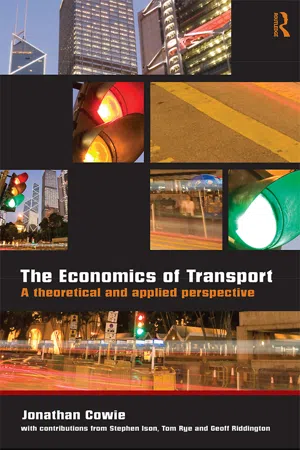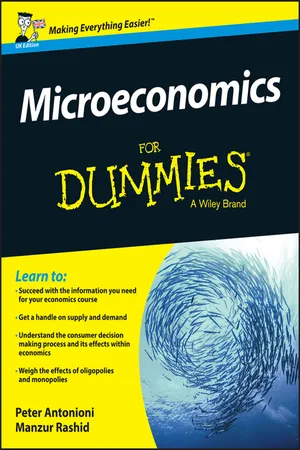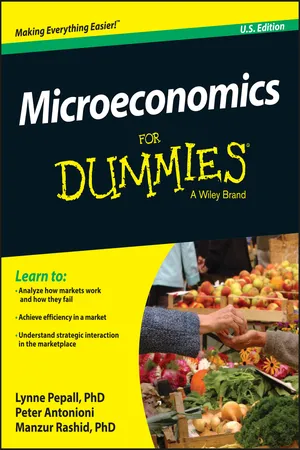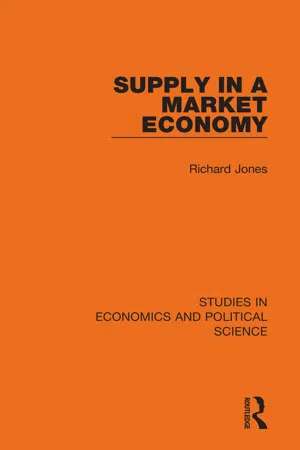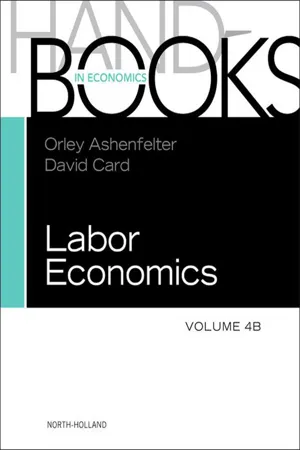Economics
Imperfect Market
An imperfect market refers to a market where conditions for perfect competition are not met. This can result from factors such as barriers to entry, information asymmetry, or the presence of externalities. Imperfect markets often lead to inefficiencies and can result in market power for certain firms, impacting prices and allocation of resources.
Written by Perlego with AI-assistance
Related key terms
Related key terms
1 of 4
Related key terms
1 of 3
7 Key excerpts on "Imperfect Market"
- eBook - ePub
The Economics of Transport
A Theoretical and Applied Perspective
- Jonathan Cowie(Author)
- 2009(Publication Date)
- Routledge(Publisher)
Chapter 7 Imperfect competition in transport marketsOn reading this chapter, you will learn about:Learning Outcomes:- The Imperfect Market structures of monopoly and oligopoly and their high prevalence in transport markets
- The main sources of barriers to entry into transport markets
- The disadvantages and advantages of Imperfect Markets in the provision of transport services
- The tendency for competitive transport markets to veer towards Imperfect Market structures through company mergers and acquisitions
- One perspective of the process of competition and how industry structure may change and evolve over time.
INTRODUCTION
In this chapter the examination of competition within transport markets is further developed by introducing the idea of the imperfectly competitive market. A simple but highly accurate definition of such a market is one that breaches one or more of the assumptions of perfect competition. What this results in is a market that may have some form of competition, but that competition tends to be flawed in some respect. Consequently, operators within the market generally do not compete as fiercely as they would do in a situation of perfect competition. When left to the free market, historically most transport industries have tended towards these types of Imperfect Market structures, thus the two main forms, monopoly and oligopoly, are introduced in this chapter. In the course of the chapter we will also see that competition can take several different forms other than being based solely upon the price charged and/or the service offered, some of which are not always obvious as competitive strategies.In addition to the impact and effect of externalities, the issue of imperfectly competitive markets is the other major issue facing the organisation and provision of transport services. The consequences reach far beyond the direct issues covered in this chapter and extend to other matters such as the payment of subsidy, the regulation of operations and the question of private versus public ownership and control of transport services. This chapter will outline the problems as well as the potential advantages of Imperfect Markets in the provision of transport services. In the final section, the actual process of competition is examined, which attempts to address the question as to why so many transport markets tend towards this structure even where the best intentions of regulatory authorities have been that these markets should remain competitive. There are numerous examples where reforms have been almost wholly unsuccessful in delivering a competitive transport market in the long run. One of the principal reasons for this is that the underlying market structure, and more importantly market conduct, has proved to be far stronger than any government intervention. Understanding the basics of the competitive process is thus an important part in identifying the underlying characteristics that lead to such undesired outcomes. - eBook - ePub
- Peter Antonioni, Manzur Rashid(Authors)
- 2015(Publication Date)
- For Dummies(Publisher)
Part IVDelving into Markets, Market Failure and Welfare Economics
Many markets in information technology have unusual structures – find out what that means at www.dummies.com/extras/microeconomics .In this part …Find out why consumers love perfect competition but firms may not.Get to grips with what welfare means in economics.Discover why monopolies produce less for a higher price.Understand how things change when one side of a market knows more than the other.Passage contains an image Chapter 11
Stepping into the Real World: Oligopoly and Imperfect Competition
In This ChapterConsidering the criteria for an oligopolyModelling firms’ behaviour in oligopolyDifferentiating products to tackle competitionOligopoly is the name economists give to a type of market with only a few firms (it comes from the Greek word oligos meaning few). The classic example of an oligopoly is the supermarket industry, where a few supermarkets compete among themselves for customers and the bulk of the market is locked up between the four largest competitors: the names change – Aldi and Lidl are challenging now – but overall the market stays in the hands of few competitors. But oligopoly is visible everywhere, in industries as different as low-cost airlines and Internet services.One of the ways in which economists analyse oligopoly is by comparing it with other market structures. Compared to perfect competition, which we describe in Chapter 10 , consumers don’t get as good a deal. But compared to monopoly (which has no competition, see Chapter 13 - eBook - ePub
- Lynne Pepall, Peter Antonioni, Manzur Rashid(Authors)
- 2016(Publication Date)
- For Dummies(Publisher)
Part IVDelving into Markets, Market Failure, and Welfare Economics
Find free articles on hundreds of topics at www.dummies.com .In this part …Find out why consumers love perfect competition but firms may not.Get to grips with what welfare means in economics.Discover why monopolies produce less for a higher price.Understand how things change when one side of a market knows more than the other.Passage contains an image Chapter 11
Stepping into the Real World: Oligopoly and Imperfect Competition
In This ChapterConsidering the criteria for an oligopolyModeling firms’ strategic behavior in oligopolyDifferentiating products to soften competitionOligopoly is the name economists give to a type of market with only a few firms (it comes from the Greek word oligos meaning few). The classic example of an oligopoly is the airline industry, where a few airlines compete among themselves for customers, and the bulk of the domestic market is locked up among the four largest competitors: American, Delta, United Airlines, and Northwest. But oligopoly is visible everywhere, in industries as different as cable television services, computer and software industries, cellular phone services, and automobiles.One of the ways in which economists analyze oligopoly is by comparing it with other market structures. Compared to perfect competition, described in Chapter 10 , consumers don’t get as good a deal. But compared to monopoly (which has no competition, see Chapter 13 - eBook - ePub
- Richard Jones(Author)
- 2021(Publication Date)
- Routledge(Publisher)
It has been argued above that the so-called theory of the firm is more properly described as a theory of market supply, and as such the most widely adopted model is that of the perfectly competitive market. This is the least (descriptively) realistic model which has been developed by economists. It is this characteristic which is felt by critics and supporters to be the greatest weakness and strength of the model, as the case may be. That is to say, it is this feature of the model which has brought it into most disrepute but which, at the same time. is claimed to be its greatest strength. Those who believe that the perfectly competitive model has a significant contribution to make, argue that the economist's main interest in the firm is to derive the industry supply curve and that it is only under conditions of perfect competition that the concept of a supply curve attains the degree of precision and unambiguity necessary to its use in market models of supply and demand. Under conditions of monopoly the supply curve has a special and restricted meaning, while under conditions of monopolistic competition the concept of the industry is itself in a somewhat nebulous position.II. Perfect Competition1
The conditions necessary to the existence of a perfectly competitive market are as follows: a homogeneous product, a large number of relatively small producers, perfect information in the market place, and free and easy exit and entry into the market. Under these conditions no individual producer can influence the price charged in the market, nor can abnormal profits exist in the long run.2 Price is determined by the market and all producers are price takers; that is, the conditions described guarantee an impersonal market in which the forces of supply and demand rule. It will be appreciated that the phrase 'a competitive market' has rather a special meaning in economics. The economist would not use this expression to describe the market for washing powders, for example. The businessmen operating in that market, however, most probably feel that their market is intensely competitive.The short-run behaviour of the firm in a perfectly competitive market will now be considered. Input prices are taken to be fixed. The objective of the firm is to select that rate of output at which profits will be maximised. Price will be simultaneously determined, of course. It can be argued with some force that it is incorrect to dignify this procedure as taking a pricing decision. Price is determined by the market and profit maximisation is a condition of survival. - eBook - ePub
- Marjorie Shepherd Turner(Author)
- 2017(Publication Date)
- Routledge(Publisher)
Imperfect Competition in a spirit of toolmaking, devoting Book I to "The Technique." She employed geometry "to demonstrate that the analysis of the output and price of a single commodity can be conducted by a technique based upon the study of individual decisions." Thus it is a book based on behavioral considerations. One of the concepts used is "perfect competition," which prevails when the demand for the output of each producer is perfectly elastic. Under perfect competition, the producer can sell all of his products at a market-given price—that is, the price will be unaffected by his selling his entire output. The meaning of the assumption of perfect competition is important because it underlies traditional economic analysis, particularly general equilibrium analysis, and all arguments that labor receives the value of its marginal product. Perfect competition entails markets where the number of sellers is large, so that the output of any one seller constitutes a negligible proportion of the total output and furthermore, buyers are indifferent to any choice between sellers.In an Imperfect Market, these conditions are not met. Since most real-world markets are imperfect, Robinson was trying to construct a theory somewhat closer to reality. She did this by comparing monopoly equilibrium, competitive equilibrium, and the output and price discrimination possible in Imperfect Markets. In Books VII and VIII she applied monopoly and pure competition models to the demand for labor as a factor of production. She concluded in Book IX that there was both monopolistic and monopsonistic (buyer as a single firm) exploitation of labor—all demonstrable because the demand curves in imperfect competition are not perfectly elastic. Thus Robinson was doing several things at once—providing a new analysis of price and income determination, using the new concept of marginal revenue, and following through to the implications which such new analysis requires.The reception of this work further clarifies these issues, or in some ways obfuscates them, for not everyone was ready for either the analysis or the implications. The American reception was split along lines of those who preferred the traditional theory and those, like American institutionalists, who had long been critical of it.* - eBook - ePub
- Orley Ashenfelter, David Card(Authors)
- 2010(Publication Date)
- North Holland(Publisher)
Chapter 11 Imperfect Competition in the Labor MarketManning Alan1 , Centre for Economic Performance, London School of Economics, Houghton Street, London WC2A 2AEAbstract
It is increasingly recognized that labor markets are pervasively imperfectly competitive, that there are rents to the employment relationship for both worker and employer. This chapter considers why it is sensible to think of labor market as imperfectly competitive, reviews estimates on the size of rents, theories of and evidence on the distribution of rents between worker and employer, and the areas of labor economics where a perspective derived from imperfect competition makes a substantial difference to thought.Keywords
Imperfect competition; Labor markets; Rents; Search; Matching; MonopsonyIntroduction
In recent years, it has been increasingly recognized that many aspects of labor markets are best analyzed from the perspective that there is some degree of imperfect competition. At its most general, “imperfect competition” should be taken to mean that employer or worker or both get some rents from an existing employment relationship. If an employer gets rents, then this means that the employer will be worse off if a worker leaves i.e. the marginal product is above the wage and worker replacement is costly. If a worker gets rents then this means that the loss of the current job makes the worker worse off—an identical job cannot be found at zero cost. If labor markets are perfectly competitive then an employer can find any number of equally productive workers at the prevailing market wage so that a worker who left could be costlessly replaced by an identical worker paid the same wage. And a worker who lost their job could immediately find another identical employer paying the same wage so would not suffer losses.A good reason for thinking that there are rents in the employment relationship is that people think jobs are a “big deal”. For example, when asked open-ended questions about the most important events in their life over the past year, employment-related events (got job, lost job, got promoted) come second after “family” events (births, marriages, divorces and death)—see Table 1 for some British evidence on this. This evidence resonates with personal experience and with more formal evidence—for example, the studies of Jacobson et al. (1993) and Von Wachter, Manchester and Song (2009) all suggest substantial costs of job loss. And classic studies like Oi (1962) - eBook - ePub
Wage-Fixing (Routledge Revivals)
Stagflation - Volume 1
- J. E. Meade(Author)
- 2013(Publication Date)
- Routledge(Publisher)
2. Monopolistic and Monopsonistic Features of the Real WorldSo much for the fairyland of perfect competition. There are a number of reasons why in the real world it is not possible to rely fully on the forces of competition in the organisation of the productive process. Technical economies of large-scale production mean that in many cases the size of an efficient productive enterprise is large relative to the market for its products; and in such cases there may be room for only one or at the most a few producers. Differentiation between similar branded products by significant differences of real characteristics or by imaginary differences due to advertisement and packaging may make it impossible for one producer to invade another producer's market merely by a fractional reduction in the price charged for the product. Real costs of movement of goods and/or of workers from one place to another may mean that local markets for goods and for workers enjoy some protection from each other. Absence of organised markets may mean that workers and producers are ignorant of the possibilities of selling their services or their products in alternative markets.Consider then a producer who for one or other of these reasons — for example, because of economies of large-scale production — is producing and selling in an imperfectly competitive market. If he expands his output he may have to cut his price and so his profit margin significantly in order to increase his sales; and by restricting his output for sale in his protected market he can raise his selling price and so his profit margin. He has a monopolistic
Index pages curate the most relevant extracts from our library of academic textbooks. They’ve been created using an in-house natural language model (NLM), each adding context and meaning to key research topics.
Explore more topic indexes
Explore more topic indexes
1 of 6
Explore more topic indexes
1 of 4
